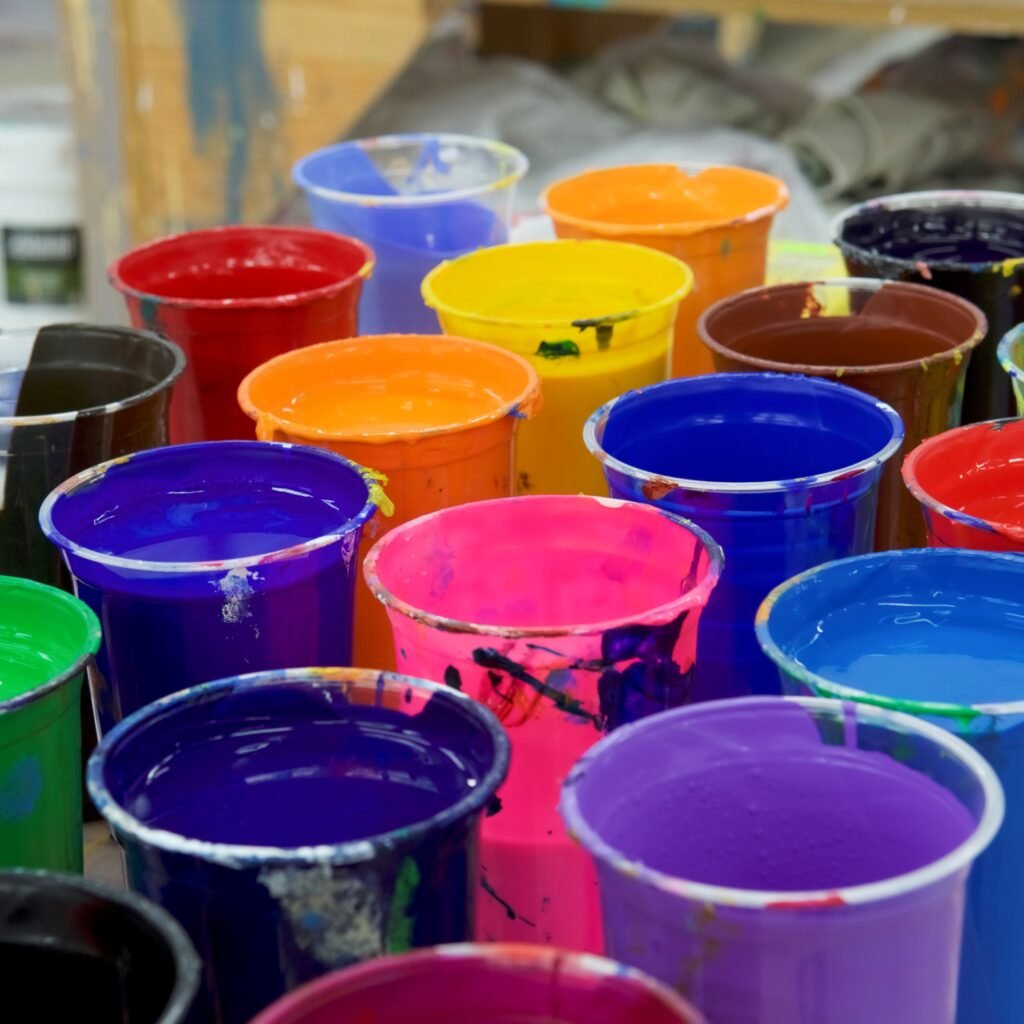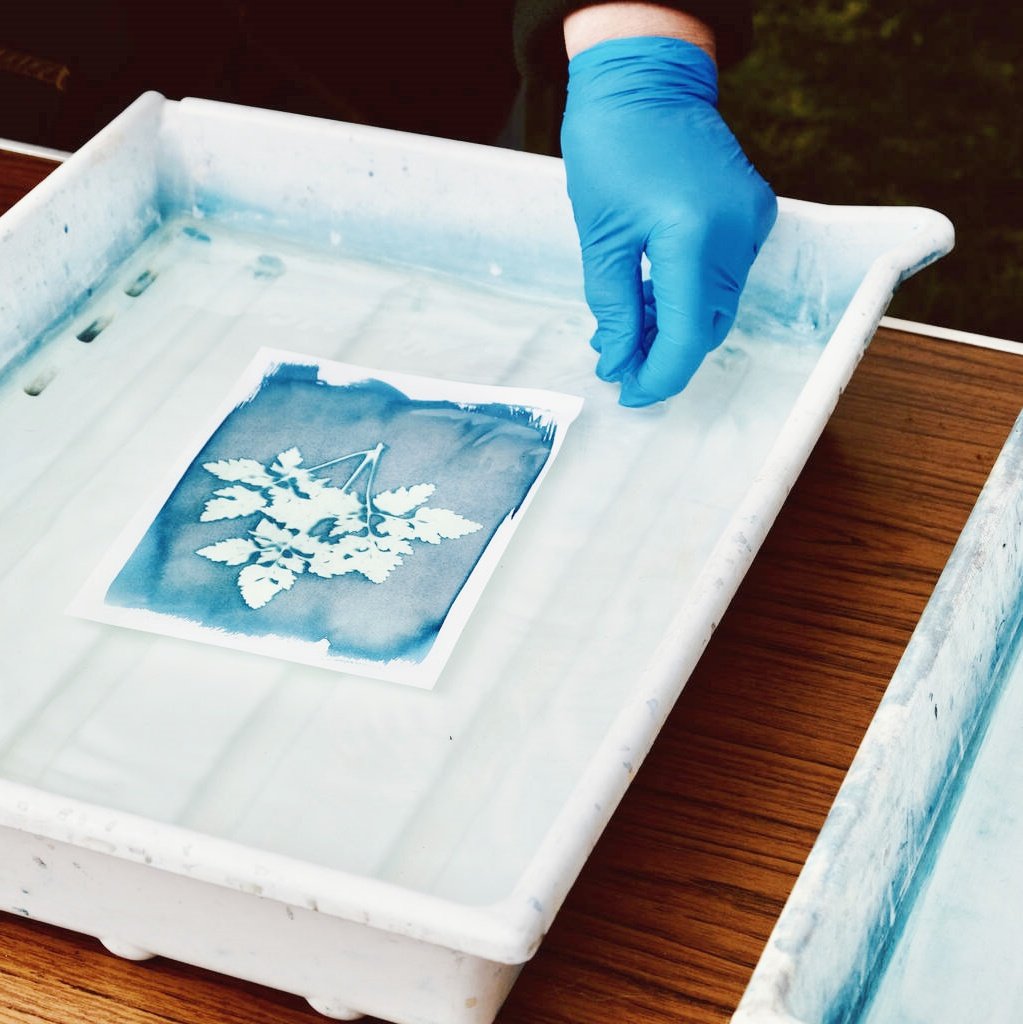In today’s era of heightened environmental awareness, choosing the right printing ink is crucial for apparel and textile manufacturers. This article will delve into the environmental performance comparison between Plastisol vs Fashion Ink, while also briefly mentioning the comparisons between Plastisol and several other types of inks, including Plastisol itself in different formulations, Speedball Ink, water-based inks for textile printing, and water-based inks for mixing Pantone colors. Through this article, you will gain a more comprehensive understanding of the environmental characteristics of these inks to make more informed choices.
The Environmental Basics of Plastisol Ink
1. Composition and Recycling of Plastisol Ink
Plastisol Ink primarily consists of PVC resin, plasticizers, pigments, and stabilizers. Although PVC has been questioned in some environmental circles, modern Plastisol Ink manufacturers are actively developing more eco-friendly formulations. Notably, Plastisol Ink waste can be recycled in some cases, although the recycling process may be more complex than other types of inks.
2. Emissions and Impacts of Plastisol Ink
During production and use, Plastisol Ink may release volatile organic compounds (VOCs). Although modern production methods have significantly reduced these emissions, certain environments still require caution. Additionally, Plastisol Ink prints, if not properly disposed of, may pose long-term environmental impacts.
The Environmental Advantages of Fashion Ink
1. Ingredients and Biodegradability
Fashion Ink typically bases on more eco-friendly raw materials, such as natural resins and plant pigments. These ingredients make Fashion Ink, in some cases, more biodegradable, reducing long-term environmental burdens.
2. Environmental Impacts of Production and Use
Compared to Plastisol Ink, Fashion Ink usually releases fewer VOCs during production. Furthermore, the printing process for Fashion Ink is often gentler, reducing energy consumption and wastewater discharge.
Plastisol vs. Plastisol Ink (Different Formulations and Environmental Impact)
When discussing the environmental performance of Plastisol Ink, it’s necessary to mention the differences between various formulations. Certain premium Plastisol Ink formulations utilize more eco-friendly plasticizers and pigments, thereby reducing environmental impacts. However, these eco-friendly Plastisol Inks often come at a higher cost, necessitating a balance between cost and environmental benefits.
Plastisol vs. Speedball Ink (Environmental Comparison of Traditional and Modern Inks)
Speedball Ink is a traditional ink commonly used in handicrafts and textile printing. Compared to Plastisol Ink, Speedball Ink typically contains more natural ingredients but may also include environmentally harmful chemicals. In terms of environmental performance, Speedball Ink’s performance varies by formulation but may generally be inferior to modern eco-friendly Plastisol Ink or Fashion Ink.
Plastisol vs. Water-Based Inks for Textile Printing (Environmental Trends)
Water-based inks for textile printing are an emerging type of eco-friendly ink in recent years. They are water-based, reducing VOC emissions and generally having better biodegradability. Compared to Plastisol Ink, water-based inks have a smaller environmental impact during the printing process and are easier to degrade naturally after disposal. However, water-based inks may not be as durable or vibrant in color in some applications as Plastisol Ink.
Plastisol vs. Water-Based Inks for Mixing Pantone Colors (Balancing Color and Environmental Performance)
In applications requiring precise Pantone color matching, water-based inks also excel. These inks can accurately reproduce colors from the Pantone color chart while maintaining environmental performance. Compared to Plastisol Ink, water-based inks for mixing Pantone colors offer a better balance between environmental protection and color accuracy. However, they may require more investment in printing techniques and equipment.
Specific Case Studies on Environmental Performance
1. Environmental Challenges of Plastisol Ink in Garment Printing
Garment printing is one of the main application areas of Plastisol Ink. However, with increasing consumer demand for eco-friendly products, Plastisol Ink faces growing environmental challenges. Some brands have already switched to more eco-friendly ink alternatives, such as Fashion Ink and water-based inks.
2. Environmental Advantages of Fashion Ink in Textile Decoration
Compared to Plastisol Ink, Fashion Ink demonstrates stronger environmental advantages in the field of textile decoration. They not only have better biodegradability but also have a smaller environmental impact during production. This makes Fashion Ink an ideal choice for textile manufacturers pursuing environmental protection and sustainable development.
3. Impact of Environmental Regulations on Ink Selection
As global environmental regulations become increasingly stringent, ink manufacturers and textile manufacturers must pay more attention to the environmental performance of inks. This has driven the development and application of more eco-friendly inks, including Fashion Ink and water-based inks. For manufacturers still using Plastisol Ink, they face pressure and cost challenges from complying with environmental regulations.
Consumer and Market Responses
1. Increasing Consumer Demand for Eco-Friendly Inks
As consumer awareness of environmental protection increases, they increasingly prefer products printed with eco-friendly inks. This has driven the growth in market demand for more eco-friendly inks, including Fashion Ink and water-based inks. For brands and manufacturers still using Plastisol Ink, they face pressure and competitive challenges from consumers.
2. Manufacturers’ Acceptance of Eco-Friendly Inks
Although Plastisol Ink still has advantages in some areas (such as cost-effectiveness and vibrant color), more and more manufacturers are accepting and adopting eco-friendlier ink alternatives. They realize that by adopting eco-friendly inks, they can not only meet consumer demand but also enhance their brand image and market share.
Future Trends in Eco-Friendly Inks
1. Technological Innovations Driving the Development of Eco-Friendly Inks
With continuous technological advancements and innovations, more eco-friendly, efficient, and economical ink alternatives will continue to emerge. These new inks will not only meet consumer demand for eco-friendly products but also provide greater flexibility and competitiveness for manufacturers.
2. Regulations and Policies Promoting Eco-Friendly Inks
Global environmental regulations and policies will continue to drive the ink industry towards more eco-friendly directions. Governments will increase support and investment in eco-friendly inks while strengthening restrictions and supervision on traditional inks. This will provide a better environment and opportunities for the development of eco-friendly inks.
Conclusion
In summary,plastisol vs fashion ink there are significant differences in environmental performance between Plastisol Ink and Fashion Ink. Although Plastisol Ink still has advantages in certain areas, with increasing consumer demand for eco-friendly products and stricter global environmental regulations, more eco-friendly ink alternatives (such as Fashion Ink and water-based inks) will become mainstream trends in the future. For ink manufacturers and textile manufacturers, actively adopting eco-friendly inks will not only help meet market demand and enhance brand image but also contribute to sustainable development.


